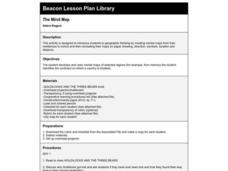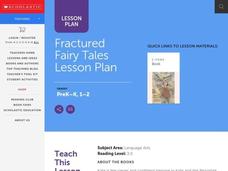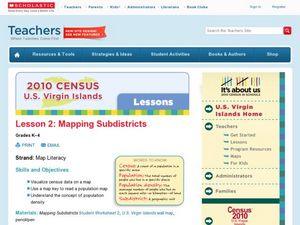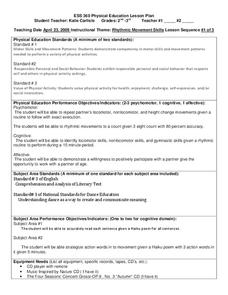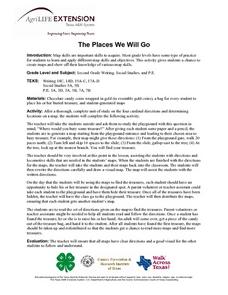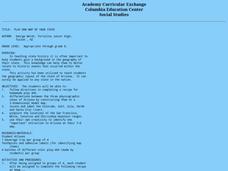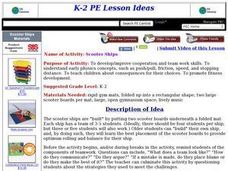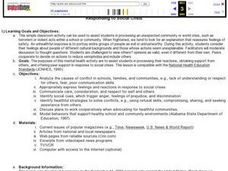Curated OER
Body Decorations
Body decoration has been practiced for years and years, and it is often associated with a culturally significant event. To celebrate Harmony Day, children discuss the Hindu custom of henna or hand painting. They brainstorm ways people...
Curated OER
Our Diverse Classroom
Celebrate the diversity in your classroom with an activity that has children explore the backgrounds and experiences of their peers. Each child is given a worksheet intended to foster a conversation about things commonly associated with...
Federal Reserve Bank
Wants on a Continuum
You can't always get what you want, but you might just be able to teach your class about wants and choices. This plan leads pupils through a discussion and closes with a worksheet and assessment.
Curated OER
K-5th Grade Lesson Plan on Diversity - Animals
Students investigate stereotyping and diversity by looking at dog breeds. In this diversity and stereotype lesson, students discuss characteristics of dogs they are familiar with. They describe similarities and differences between the...
Curated OER
Appreciating Diversity: A Multicultural Lesson Based on the Traditional Clothing of the Maya
Students compare the traditional Mayan clothing to their everyday clothing. In this multicultural appreciation lesson, students look at images of traditional Mayan clothing and discuss its importance.
Curated OER
The Mind Map
Learners form a mental map of their residence in relation to school and recreate it on paper showing distance, direction, location and symbols. This lesson is designed to introduce young scholars to geographic thinking.
Curated OER
Creating a Caring Culture: Appreciating the Diversity of Your School
Young scholars explore community diversity. In this character education lesson, students read the book Is There Really a Human Race? discussing it with their classmates and teachers. Young scholars design paper dolls to represent...
Curated OER
The Flow of Women's Work: How Cultures are Alike and Different?
Learners examine gender roles in various cultures. In this flow of women's work lesson, students compare water related work in rural Africa to that in their own households.
Curated OER
What Shape is That?
Each country or group of people has created special places of worship. Children read a story about religious buildings and architecture and then make clay models of the buildings they like the best. The lesson has been written to...
Curated OER
Kate and the Beanstalk Lesson Plan
Students gain a deeper understanding of the fairy tale genre by reading fractured versions of familiar tales. In this Kate and the Beanstalk lesson plan, students read a variety of fairy tales and fractured fairy tales in order to...
Curated OER
Lesson 4: A Class Census
Students compile results in their own census. For this early childhood U. S. Census lesson plan, students collect and represent information about events in simple charts.
Curated OER
Lesson 2: Mapping Sub-districts
Students learn more about the census. For this mapping sub-districts lesson plan, students visualize census data on a map, use a map key to read a population map, and better understand the concept of population density.
Curated OER
Sharing in the Classroom
Students explore the concept of sharing. In this character education lesson, students role play methods of sharing in the classroom and create a guidebook for sharing in the classroom.
Curated OER
Cultivating Caring - Filling Buckets of Caring Carrots
Students practice compassion. In this character education lesson, student read Have You Filled a Bucket Today? by Carol McCloud. Students discuss the book as well as ways to demonstrate they care for one another. Students fill buckets...
Curated OER
Picture-Go-Round: Philanthropy Lesson
Students play a game. In this cooperation instructional activity, students are introduced to a game where they each take turns drawing a piece of a picture. They discuss how we can do different things when we work together and what the...
Curated OER
Rhythmic Movement Skills
Learners explore rhythmic movements. In this performing arts lesson plan, students create their own movements and then repeat the each others movement. Finally, learners create movements to the Haiku generated by the entire class.
Curated OER
The Places We Will Go
Second graders demonstrate basic map skills. They each bury a bag of chocolate coins, create a map with directions to find their "treasure," and follow another student's directions to locate a bag of coins.
Curated OER
A Map Mystery
Second graders solve a map mystery. In this technology lesson plan, 2nd graders develop an awareness of maps and the symbols associated with maps as they the "Neighborhood Map Machine."
Curated OER
United States Map- Map Legend/City Symbols
Students investigate the United States map. In this map skills geography lesson, students explore city symbols on the map legend and identify them. Students use post-it notes to mark various symbols.
Curated OER
Play Doh Map of Your State
Young scholars create a state map using Playdoh. In this hands-on state geography lesson, students work in groups to form a three-dimensional map of their state using Playdoh made at home following a (given) recipe. Young scholars...
Curated OER
Scooter Ships
Students explore simple physics concepts such as push/pull, friction, and speed. In this physics/physical education lesson, students work in co-operative groups to "build" a spaceship out of scooters and folded mats. Teams experiment...
Curated OER
Responding to Social Crisis
Students, through discussion, identify ways to cope with and process unexpected community or world crisis, such as terrorism or violent acts within a school or community.
Curated OER
The Classroom Easter Egg Hunt
Learners work cooperatively to discover hidden Easter eggs in the classroom using prepositions of location. They record the location of the eggs on the worksheet found at the included web link but do not move it so others can find it.
Curated OER
Harriet Tubman: Dancing on the Freedom Trail
Students observe a dance interpretation about Harriet Tubman. In this art/social studies instructional activity, students explore how their emotions can be expressed through movement and create their own dance or dramatic interpretation.





